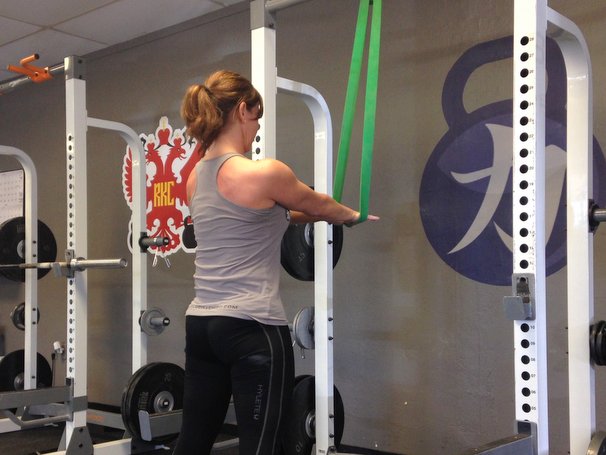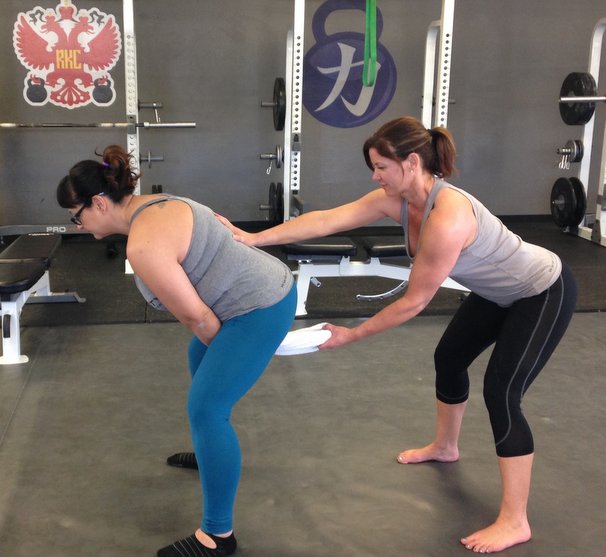
Solidifying the top and bottom positions of the kettlebell swing are key components to teaching someone to swing correctly. I have two go-to drills: one is part of the RKC manual and curriculum (the towel pull drill), and the other is something I had been using as a core activation drill. I found the standing power band plank had a lot of carryover for teaching the top position of the swing.
The Standing Power Band Plank:
With good cueing and proper positioning, this drill can teach rooting to the floor, solid core engagement, shoulder packing, and how to “breathe behind the shield”.
Here’s how to do it:
Loop a thick resistance band around a pull-up bar. Stand facing the resistance band with your feet hip distance apart. With your arms extended straight out in front, place your hands inside the band with your palms facing down—just like they are at the top of the swing. From this point, the cueing is nearly identical as for the Hardstyle plank.
- Your body should form a straight line from the top of your head down to your heels.
- Flatten your lower back. Imagine that you are bringing the tailbone and belly button together. Lift the pelvic floor.
- Squeeze your glutes tight.
- Pull up your kneecaps, and tighten your quads.
- Now, engage the lats and upper back by pressing down on the band, while packing and pressing the shoulders down and away from the ears.
- Breathe shallowly into a tight stomach.
- Hold this position for 10- 30 seconds.
Follow the standing power band plank with an isometric hold of the towel-pull drill from the RKC manual.
Quick review of the towel-pull drill:

Have the student hold each end of a towel and pass the center section of the towel between their legs, pretending they are on the backswing. The instructor grabs the center section of the towel. Using one hand to brace the student on the low back (so they don’t fall backward), the instructor pulls the towel until the student’s hips are fully loaded and most of their weight shifts toward their heels. Holding this isometric contraction for ten seconds or more can help the student feel where the bottom position of the swing should be. You would also choose the towel-pull drill as a corrective for someone who fails to load the hips and hamstrings.
Use the standing power band plank as a corrective drill for anyone who is…
- Not contracting their glutes maximally at the top of the swing
- Leaning back at the top of the swing
- Not packing the shoulders
- Using their arms to lift the kettlebell
After teaching the hip hinge and deadlift, performing a few isometric holds of these drills can help lock in the proper top and bottom positions of the kettlebell swing. Incorporate some one-arm isometric holds as well. Happy swinging!
***
Robin Sinclear, RKC-II, is the co-owner of Velocity Strength and Fitness in Chico, California. Her website is VelocityChico.com. She can be reached by email at velocitystrong@gmail.com or by phone at 530-520-2297. Follow Velocity Strength and Fitness on Facebook, Instagram, and Twitter.